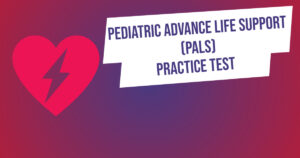
Pediatric Advanced Life Support (PALS)
Our PALS practice test is tailored for healthcare providers seeking to excel in pediatric emergencies. With realistic scenarios and comprehensive explanations, it's your key to mastering pediatric advanced life support techniques. Prepare confidently for PALS certification exams and enhance your ability to save young lives in critical situations.